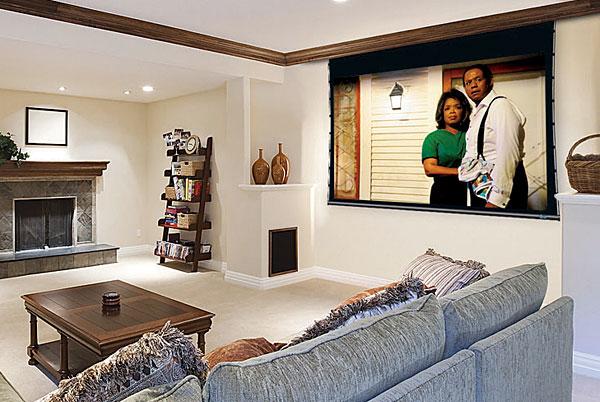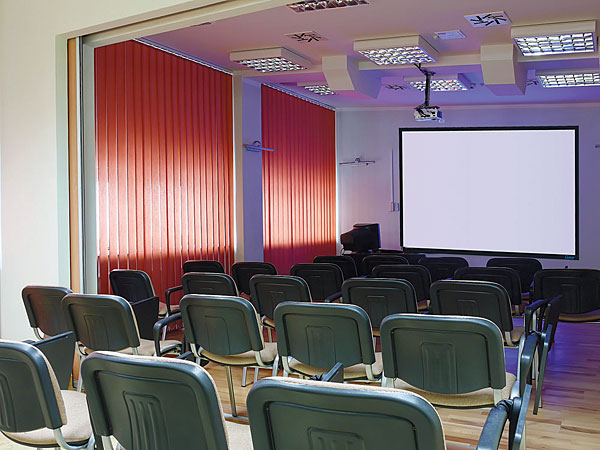Unlike temporary solutions such as beard oils, creams, or makeup, beard transplant hair transplant offers a permanent solution to sparse or patchy facial hair https://www.thehairtreatments.com/. The transplanted hair follicles continue to grow naturally, providing l ong-lasting results.
Stewart Filmscreen Cima Projection Screen

AT A GLANCE
Plus
Excellent picture quality
Competitive with Stewart’s upmarket designs
Minus
Varied sizes and configurations but no custom options
THE VERDICT
Stewart Filmscreen’s Cima lineup offers fewer options than the company’s long-respected but more expensive designs, but it makes Stewart’s pristine image quality now available to a wider range of buyers.
What can one say about a projection screen? Quite a lot, actually. A screen is much more than a bedsheet or the nearest white wall. While it can’t improve the quality of a projector, it can, if poorly designed, most certainly degrade it.
Screens can be solid or (mostly) acoustically transparent. They can be white or various shades of gray (the latter often incorporating special treatments designed to improve performance in a less than ideally darkened room). They’re available in a wide range of gains—1.0 for more or less neutral performance or higher values to enhance brightness from a less than torch-like projector and/or a super-large screen. They can be fixed or retractable, sometimes even employing motorized masking to suit the aspect ratio of any source. And we haven’t even touched on decorative frames, special screens for (polarized) 3D, or flat versus curved screens. Stewart Filmscreen has long offered nearly all of these options in its projection screens, widely used in both consumer and professional installations.
But offering a blizzard of options makes for pricey, virtually custom-built products. To keep costs and prices down for customers with more limited budgets, Stewart recently introduced its Cima lineup. When first launched at the 2012 CEDIA Expo, these screens were available only in a limited range of non-perforated sizes and only with fixed frames. Now, however, there are both fixed frame and retractable Cimas. The retractable models are available either with a conventional case or in a case designed to be recessed into the ceiling.
There are now two Cima screen materials—white for dark room installations (Neve, specified gain 1.1) and gray for rooms with less light control (Tiburon, gain 0.95). Either may be had with a solid surface, while the Neve also comes perforated for acoustical transparency (Perforado). The available sizes are still limited, but the range is broad enough to satisfy most users. You can also choose aspect ratios from among 16:9, 16:10 (a traditional aspect ratio for computer monitoring), and 2.35:1.
The only factor I could find in the available options that might be an issue in some installations is the drop specified for the retractable Cima models. The drop is the black material above the active picture area of a retractable screen that determines the height where the image begins. The Cima retractables come with a standard 6-inch drop, with an option for a 12-inch drop at an extra $100, for the recessed-case version only. A drop of 12 inches or less might be a concern depending on your ceiling height and how low you prefer your screen to be. For example, I have a 96-inch-wide, 40-inch-high 2.35:1 Stewart StudioTek 130 screen in my home theater setup; the screen is positioned off the back wall and must therefore be mounted on the ceiling. I prefer a screen centered at roughly eye level, and to achieve this with my 8-foot ceiling, I custom-ordered my StudioTek 130 with a drop of 24 inches. You can’t order such a custom drop with a Cima screen. But if my screen had been 16:9, its active picture area would be 13 inches taller, which would solve the problem. With a higher ceiling, however, such a screen might be too high—for me. Of course, if you order a retractable Cima and mount it on the wall instead of the ceiling, you can position it at whatever height you want. Meanwhile, Stewart says the company is looking at adding expanded black drop options to the Cima line.
Setup and Performance
Stewart’s Tiburon (gray) Cima screen material was not tested here. It does claim advantages in a room with imperfect light control, but don’t expect miracles. Keep in mind that while some screens are more efficient than others in rejecting ambient light, in my experience, the best performance you can get from any projector will be in a fully darkened room, preferably with a white screen having a gain of no more than 1.5.
We requested a fixed Cima Neve (white), 16:9, 96-inch-wide (110-inch-diagonal) screen for review. Setup was relatively straightforward, which in this case involved assembling the frame and stretching the screen to fit. If you have no experience at this, however, you might wish to seek out someone who does. Screens are delicate animals, and the setup phase entails the greatest risk of damage they’re likely to encounter during their lifetime, short of a shoe impact halfway through Twilight.
Apart from the issue of screen height preference, as mentioned earlier, there are only a few vital things you can ask of a screen, particularly if it isn’t motorized or perforated—and our sample was neither. Is the gain appropriate? Is the surface flat and uniform? And most important, given a good projector, can it produce a compelling picture?

Our Cima met all of these requirements and then some. I used it with a JVC DLA-X35B projector with less than 10 hours on its lamp. The projector was used in its out-of-box 6500K color temperature setting, since doing a full calibration on a projector with this little time on its lamp is pointless. Even so, the color was superb, the resolution crisp, and the image plenty bright enough with the projector’s manual iris set to –6 in the low lamp setting. With the gamma at 2.3, the picture was richly saturated and detailed. The color was visibly uniform across the screen. The only uniformity issue I saw, when seated at the left side of the screen and viewing a full field test pattern, was a subtly lower brightness on the far side. The latter is common, in my experience, in all screens having even a small amount of gain, but it was virtually invisible with the Cima on normal program material.
Comparisons
The Cima certainly offers excellent picture quality, but how does it compare to Stewart’s StudioTek 130, the latter a popular option for home theaters? Since it was impractical during the review period to review the fixed-frame Cima screen in my home theater and compare it there with my similarly sized (but retractable) StudioTek 130, I set up the Cima in our studio. We have a fixed-frame, 118-inch-wide StudioTek 130 there, but I restricted the image on the latter to a width of 96 inches to keep the playing field even.
One disadvantage in such a comparison is that there is no practical way to compare two screens directly. Even with the screens side by side, you’d need two absolutely identical projectors, plus a way to block the light of one screen from falling onto the other, while at the same time making it possible for the viewer to see both simultaneously. For my testing, I needed to reposition either the projector or one of the screens between comparisons. I tried both, but either option took a minimum of 5 minutes.
This of course made the A/B comparison more of an A—Pause— B. Nevertheless, the result was effectively a dead heat. The StudioTek was a hair brighter, as you might expect given its higher gain, but this was easy to compensate for with a one-step change to the projector’s iris setting. The test convinced me that the only substantive differences between the Cima and the StudioTek 130 are the latter’s slightly higher gain and wider range of custom choices.
Conclusions
The Cima, at least in its non-
perforated, Neve material tested here, is a superb projection screen. You can spend a lot more for the options offered in higher-priced models. But in the final analysis, what counts is the picture, and in that regard I found nothing whatsoever in the Cima to complain about.
Note: The Where to Buy link below is an affiliate link. If you purchase through the link, we may earn a small commission at no extra cost to you. Thank you for your support!
- Log in or register to post comments


Cosgn delivers flexible payment solutions, exceptional web development, and UX/UI design, enabling businesses to launch impactful digital projects seamlessly and without upfront costs.































































